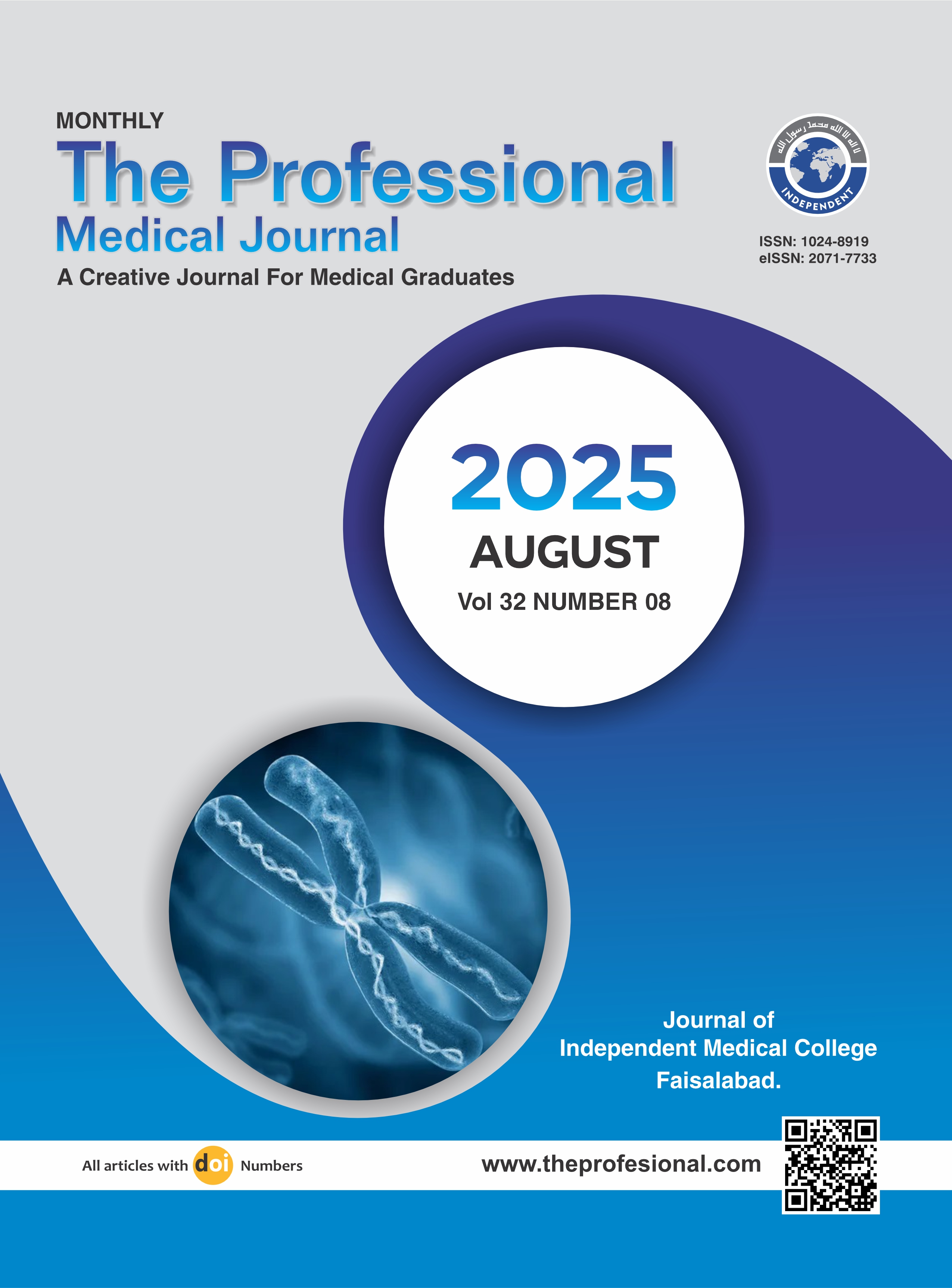Common organisms in urinary tract infections and their sensitivity to pharmacological treatment in the outdoor patients of Urology Department Sheikh Zayed Hospital.
DOI:
https://doi.org/10.29309/TPMJ/2025.32.08.9761Keywords:
Antibiotics, Microbial Sensitivity, Urinary Tract InfectionAbstract
Objective: To identify the most common organisms causing urinary tract infections (UTIs) and evaluate their sensitivity to pharmacological treatments. Study Design: Cross-sectional study. Setting: Out-patient Department of Urology, Sheikh Zayed Hospital, Rahim Yar Khan. Period: 1 Nov 2024 to 1 April 2025. Methods: on 119 patients, both male/female, aged 18-60 years, diagnosed with UTIs and no history antibiotic intake. Urine samples were collected and sent for culture and sensitivity. Data was analyzed using SPSS 25.0 with P-value < 0.05 as statistically significant. Results: In the study, the mean age of male participants was 43.45 ± 9.01 years, while the mean age of female participants was 44.58 ± 12.94 years. Fever was significantly more common in males (36.5%) compared to females (11.9%) (p = 0.003). Escherichia coli was the most prevalent (35.3%), with high susceptibility to Amikacin (83.3%) and Colistin (95.2%), but high resistance to Amoxicillin (76.2%) and Cefotaxime (47.6%). Klebsiella pneumoniae was most susceptible to Colistin (94.9%) and Meropenem (92.3%) but resistant to Amoxicillin (87.2%) and Cefotaxime (61.5%). Pseudomonas aeruginosa showed high resistance to Amoxicillin (52.4%) but was highly susceptible to Colistin (88.9%) and Teicoplanin (100%). Conclusion: Escherichia coli was identified as the most prevalent pathogen, particularly in females. The findings highlight the concerning resistance of common pathogens, such as Klebsiella pneumoniae and Pseudomonas aeruginosa, to frequently used antibiotics
Downloads
Published
Issue
Section
License
Copyright (c) 2025 The Professional Medical Journal

This work is licensed under a Creative Commons Attribution-NonCommercial 4.0 International License.


